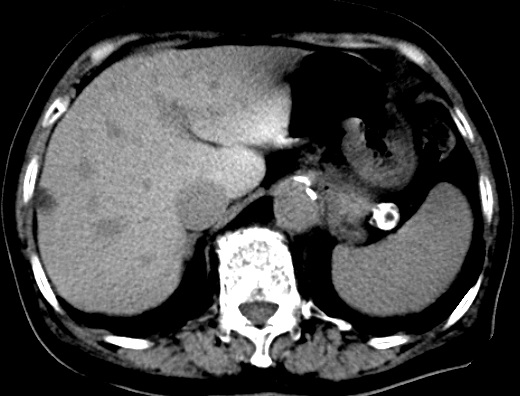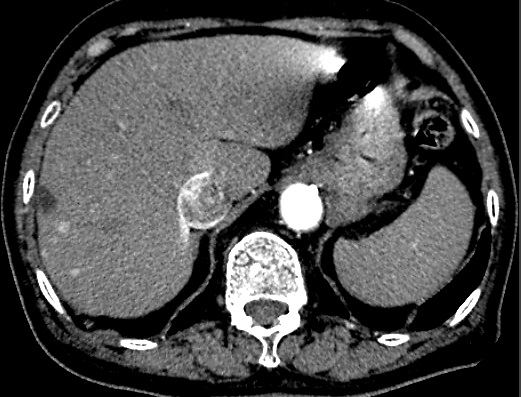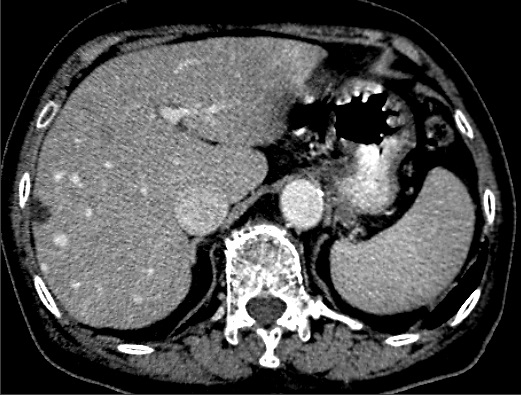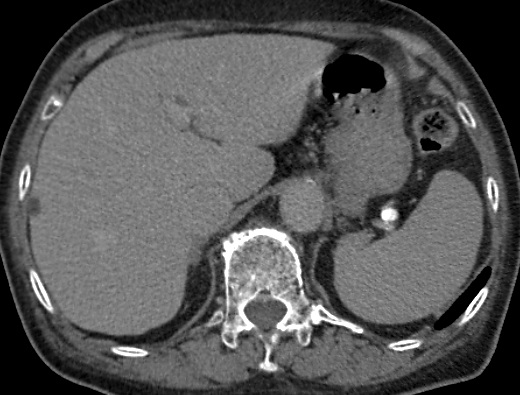Answer of October 2019
For completion of the online quiz, please visit the HKAM iCMECPD website: http://www.icmecpd.hk/
Clinical History:
An 89 year old lady was incidentally noted to have multiple enhancing liver nodules on CT coronary angiography. A dedicated triphasic CT study of the liver was subsequently performed.
Pre-contrast
Arterial phase
Portal venous phase
Delayed phase
Discussion:
Peliosis Hepatis (hepatic peliosis) is a rare benign disorder causing sinusoidal dilation and multiple blood-filled lacunae within the liver. “Peliosis” is derived from Greek pelios, meaning purple or dusky, referring to the colour of the liver parenchyma in peliosis.
Similar blood-filled lacunae can be found in the spleen, lymph nodes and other organs including bone marrow, lungs, pleura, kidneys, adrenals, and gastrointestinal tract. Size of lacunae vary from 1mm to a few cm. The lacunae may or may not contain an endothelial lining.
On CT imaging, the lesions are hypoattenuating to liver parenchyma on pre-contrast images, show globular enhancement in the arterial phase with centrifugal progression in the portovenous phase and become iso- or hyperenhancing in the portovenous phase. A centripetal progression of enhancement is possible although less common. No mass-effect is appreciated on adjacent intrahepatic vessels, even with large lesions. Thrombosed lesions are hypoenhancing.
The pathogenesis is unknown. Peliosis hepatis can be associated with medication (including steroids and cytotoxic medication), chronic diseases (e.g. diabetes, sprue), and infections (tuberculosis, leprosy, AIDS, Bartonella infection).
However, in up to 50% of patients, no associated condition is identified.
No definite age or gender predisposition is recognized. Peliosis is often asymptomatic and diagnosed incidentally on imaging or at autopsy. Severe abdominal pain from rupture and intraperitoneal haemorrhage may occur, although uncommon.
The natural course of peliosis hepatis is regression after treatment of the associated condition or withdrawal of the associated medication. Complications of peliosis hepatis may include liver failure, portal hypertension, haemoperitoneum and shock.



